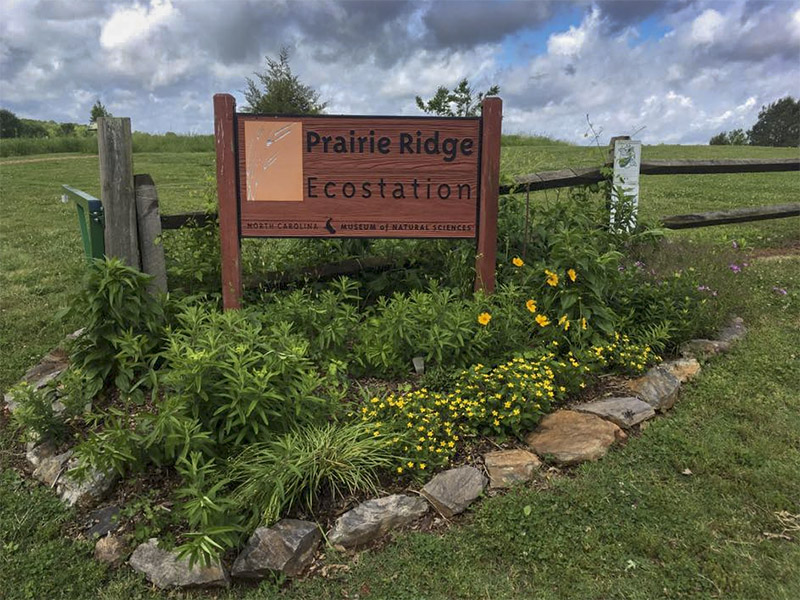Spring brings blue corporal dragonflies to NC
For immediate release ‐ April 22, 2019
Contact: Jessica Wackes, 9197079850. Images available upon request
By Chris Goforth, Head of Citizen Science, and Jess Wackes, PR & Marketing Coordinator
Spring’s in full force, and life at our outdoor learning space, Prairie Ridge, is springing up too! Blue corporals are one of the earliest dragonflies to emerge and are often gone by late May or early June. These blue beauties add a splash of color to the newly green landscape!
 Blue corporal dragonfly found at Prairie Ridge.
Blue corporal dragonfly found at Prairie Ridge.
Small size, big color
Blue corporals are small by dragonfly standards at about 1.5 inches long, and when they first emerge as adults in the spring, they are brown with hairy thoraxes and yellow markings on the sides of their abdomen. Over time, the males create a waxy layer over their thorax and abdomen that turns them a deep blue color.
It’s the cycle of life
Like most dragonflies, blue corporals spend most of their lives in water and don’t emerge until they are adults with wings! Some dragonfly species can take up to two years to develop while they’re submerged, a process that begins right after their parents mate.
As soon as an adult female finds a water source she lays her eggs. Once they hatch, they become what’s known as a nymph. Nymphs look very similar to adult dragonflies but they’re much smaller and wingless.
Nymphs play an important part of a pond’s ecosystem as predators, eating other insects and small tadpoles to keep populations balanced. As they get bigger, they molt their skin several times and eventually crawl out of the water. Once they’re on dry land, they’ll pop open their last nymphal exoskeleton, pull their body and new wings out, and become adults on land! Blue corporals are hunters as adults too, whizzing about ponds in search of insects to eat.
 Spring at Prairie Ridge
Spring at Prairie Ridge
Come visit us!
On your next visit to Prairie Ridge, keep your eyes out for dragonflies perched on pond logs or zipping around the shoreline. You can also find them sitting on the ground in open areas near the water or basking in the sunny patches on roads, buildings or tree trunks. Take a stroll down to the Prairie Ridge pond; you’re most likely to see newly emerged blue corporals flying weakly over the grass along the shore.
For more information about our upcoming activities, seasonal news and ground-breaking research, follow @NaturalSciences on Instagram, Twitter and Facebook. Join the conversation with #visitNCMNS.

